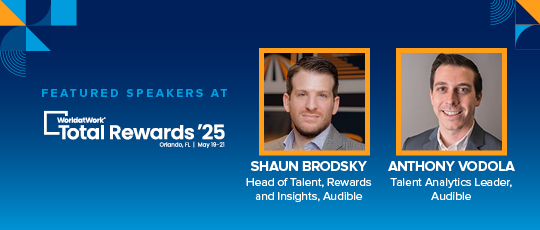Are great leaders born or made? Can leadership be learned or taught? And amid vast chance, how can organizations ensure a workplace that fosters and enhances leadership strategy?
After a pandemic, the Great Resignation, quiet quitting and other massive workplace disruptions, many organizations find themselves searching for answers. They want guidance on how organizational leadership will and must change after these shifts. The scope and pace of workplace change is historic and full of costly challenges, but it’s also an opportunity to rethink leadership entirely. Here are some launch points to rethink and refocus on a human-centered direction in the new world of work.
Leadership Must Be Human-Centered
This seems obvious: certainly, organizations must be run by humans, although AI is rapidly changing that, another topic entirely. What’s less obvious is that a human-centered leadership approach is complex because people's development needs and skills will differ, as they should. It will take patience, compassion and flexibility to tailor your organization’s leadership journey and framework to your people. The expectations and values of employees today can vary greatly, depending on individual work-life balance needs, cultural backgrounds, spiritual beliefs and evolving environments.
Start with Your Mission
There isn’t a single hybrid-working model, nor is there one easily adopted framework for diversity, equity, inclusion and belonging (DEIB) or an HR template for building a balanced workplace culture that embraces wellness and flexibility. A single, easily transferable leadership handbook doesn’t exist.
Your first and most important step toward post-shift leadership is understanding where your organization stands. By embracing leadership coaching and committing to DEIB initiatives, we can create a future where everyone feels valued, respected, and included. What are your mission and values? Have they also shifted along with society as a whole? You cannot move forward without taking this first step. It’s the foundation for everything that comes next.
Align Core Skills with Dimensional Leadership
Your human-centered leadership strategy must come from refinement and alignment between an organizational and leadership's goals and objectives. As the two align, you’ll soon identify the core attributes and skills that leaders in your organization must possess.
Notably, in today’s new human-centered organizations, these core skills aren’t simply the professional credentials one puts on their LinkedIn page. Instead, these core skills include self-awareness, resiliency, empathy, inclusivity, and other decidedly human behaviors that are so vital in organizations that are now more diverse, dynamic and constantly evolving.
Leaders will no longer be measured only by how much and how effectively they and their teams produce. Leaders in the new world of work will be judged and expected to perform across multiple dimensions.
Carol Kauffman, Ph.D. and founding director of the Institute of Coaching, McLean Hospital, a Harvard Medical School affiliate, has written that human-centered leaders of today need to embrace “three-dimensional leadership.” To do this, they will start by answering three questions:
- What do I need to do?
- Who do I need to be?
- How do I need to relate?
Answers to these questions will become the foundation for your leadership strategy — they define how human-centered skills will ultimately drive behavioral change and cultural transformation on a wider scale.
Scaling Human-Centered Leadership
Once you’ve established your unique and aligned leadership mission, you’re ready for the most challenging step — scaling it across your organization. Modern organizations will accomplish this goal by using a combination of technology and enlightened leadership coaching. Having a more formal framework ensures that emerging leaders within the organization — and everyone they lead — has visibility into the positive outcomes associated with the human-centered mission.
Scaling human-centered leadership is different than traditional approaches that focus on simply providing coaching to executives as they experience career growth and prepare for advancement.
Human-centered leadership skills — those you’ve so thoughtfully identified — have an important place in leadership training at all levels, even with emerging leaders.
When people at all levels are working together towards the same goals and objectives with a focus on essential human-centered skills, it creates a positive and impactful effect on the employees and organizations alike.
Cultivate Learned Leadership
A human-centered leadership development program will perpetuate and instill your unique leadership philosophy for years to come. And, while having a leadership mission helps guide emerging leaders, only great coaching and coaches can deliver true transformation. Without a human-centered leadership competency model, rooted in the science of coaching, organizations can find it challenging to scale and evolve.
Coaching today’s leaders is different and more challenging and will be for some time. The massive workplace shifts required equally dramatic shifts in how coaches are trained; how they engage with leaders, especially around human-centered skills; and how progress is captured and assessed.
Why Make the Shift Now
The most successful organizations of tomorrow will build leadership cultures with purpose. They will embrace a human-centered leadership approach, accepting that change is inevitable. They will acknowledge their framework for leadership is built to thrive now and during future societal and workplace transformations. Making the shift is still vitally important now: Challenging market conditions will endure for some time, perhaps years. The best talent will prefer demonstrably well-led organizations.
The job market is unpredictable and competition for talent is fierce. The Great Resignation will certainly give way to a “Great Something Else.” People are reimagining how, where and why they work, so organizations must increasingly be led by those who anticipate changes, coaches who understand how to translate it organizationally, and systems — including technology — that enable leadership coaching to scale.
Making the shift to human-center leadership now is a smart business decision. It’s a sign that you’re ready to compete and grow even as the very concept of the workplace continues to evolve in the coming decade.
Editor’s Note: Additional Content
For more information and resources related to this article see the pages below, which offer quick access to all WorldatWork content on these topics:




